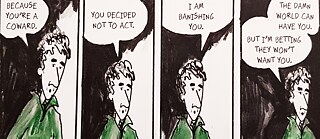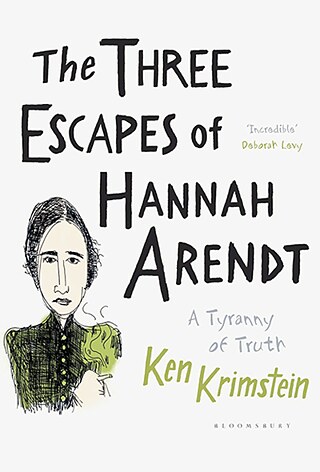Ken Krimstein
The Three Escapes of Hannah Arendt


One of the greatest philosophers of the twentieth century and a hero of political thought, the largely unsung and often misunderstood Hannah Arendt is best known for her landmark book: The Origins of Totalitarianism (1951). It holds insights into politics and human behavior that have remained valid far beyond the issue of dealing with National Socialism.
Hannah Arendt led an extraordinary life. She endured Nazi persecution firsthand, survived harrowing escapes from country to country in Europe. Before, she had studied with Martin Heidegger and Karl Jasper, later she befriended such luminaries as Walter Benjamin and Mary McCarthy, in a world inhabited by Marc Chagall and Marlene Dietrich, Albert Einstein and Sigmund Freud.
Compassionate and enlightening, playful and page-turning, New Yorker cartoonist Ken Krimstein's The Three Escapes of Hannah Arendt is a strikingly illustrated portrait of a complex, controversial, irrefutably courageous woman whose intelligence and virulent truth telling led her to breathtaking insights into the human condition, and whose experience continues to shine a light on how to live as an individual and a public citizen in troubled times.
| About the Novel | |
| Publishing year | 2018 |
| Publishing house | Bloomsbury |
| Pages | 233 |
| ISBN | 9781526602404 |
| Signature | 741.5 Kri |
| Link to the OPAC* | https://hanoi.bibliothek.goethe.de/cgi-bin/koha/opac-detail.pl?biblionumber=21942&shelfbrowse_itemnumber=5987#holdings |
| Link to the Onleihe** | https://www.onleihe.de/goethe-institut/frontend/mediaInfo,0-0-753035970-200-0-0-0-0-0-0-0.html |
Instructions for using the Onleihe from the Goethe-Institut Hanoi